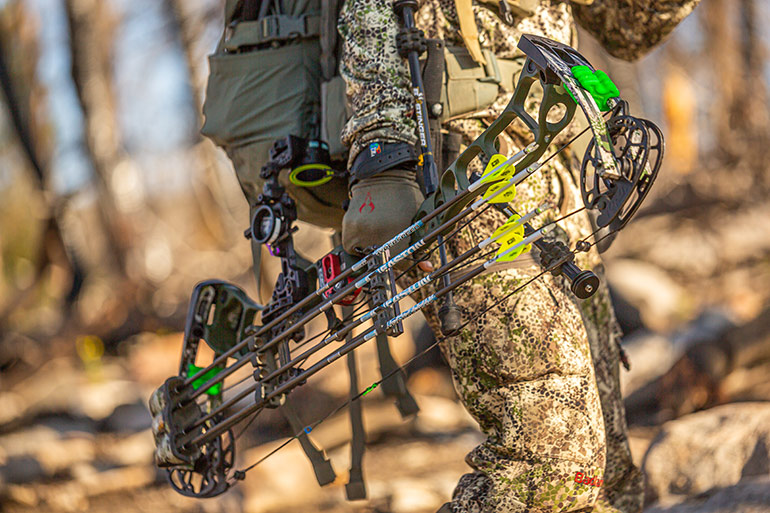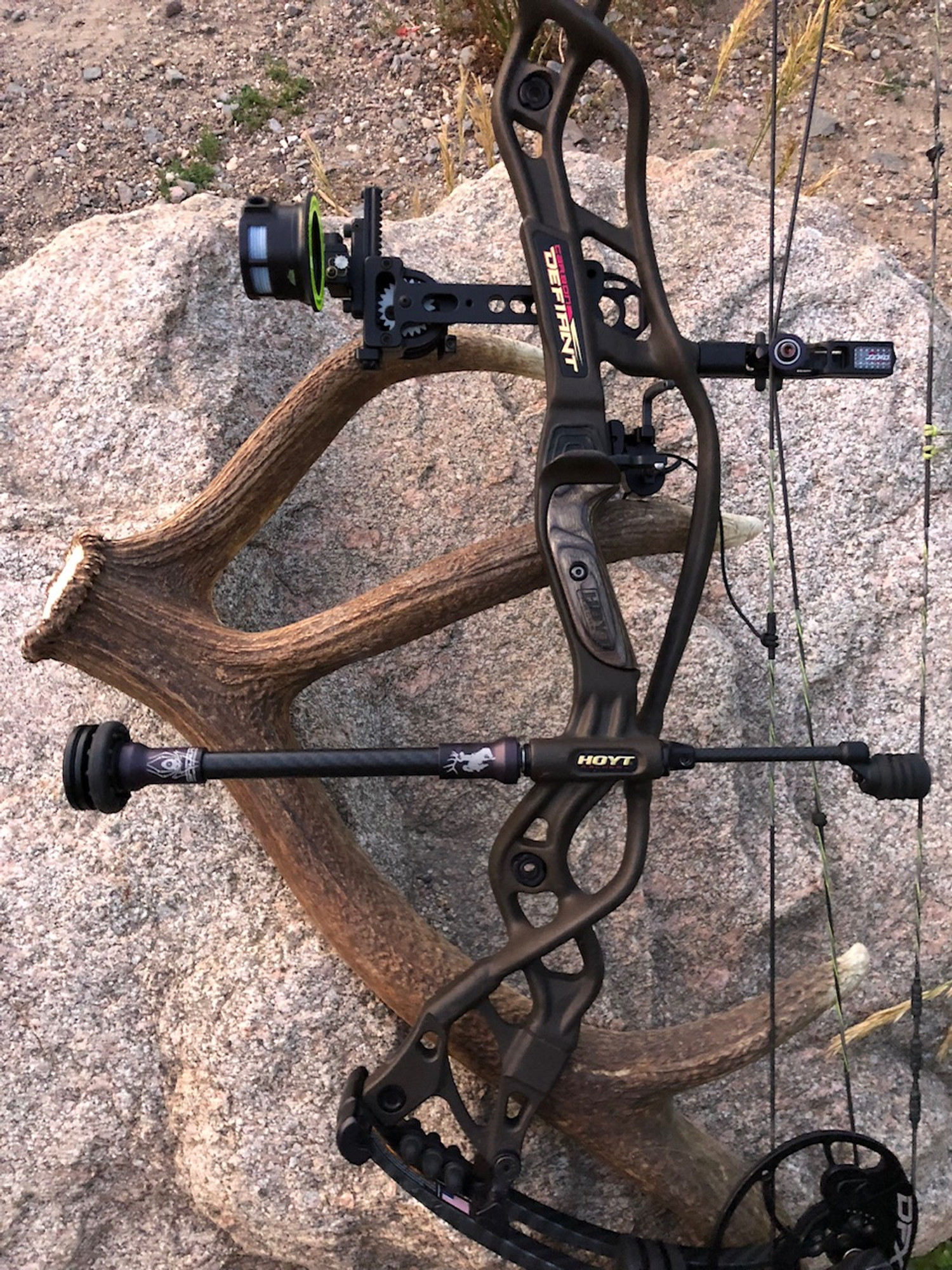The Scientific Research Behind Archery Stabilizers: Just How They Improve Performance
The Scientific Research Behind Archery Stabilizers: Just How They Improve Performance
Blog Article
The Ultimate Overview to Choosing the Right Archery Stabilizer for Boosted Accuracy
Among the numerous devices offered, an archery stabilizer plays a significant duty in boosting accuracy. In this thorough overview, we will certainly check out the essential factors to consider when picking an archery stabilizer for improved accuracy. Whether you are a skilled archer looking to update your tools or a newbie seeking guidance, join us on this trip as we decipher the tricks to picking the perfect archery stabilizer.
Length: Discovering the Optimum Stabilizer Length
Determining the optimal stabilizer size is crucial when selecting an archery stabilizer for optimal performance. A stabilizer that is too long can make the bow feel top-heavy and challenging to manage, while a stabilizer that is also short might not supply adequate stability and dampening of resonances.
A longer stabilizer, generally varying from 8 to 12 inches, can offer greater stability and reduce bow torque. This is particularly advantageous for archers who shoot with a high draw weight or those who tend to torque the bow throughout the shot. The included size helps to distribute the weight uniformly and counterbalance any kind of torque or movement.
On the various other hand, a much shorter stabilizer, normally between 4 to 7 inches, supplies much more maneuverability and quicker feedback. It is preferred by archers that fire with a reduced draw weight or those that require even more movement, such as seekers or 3D shooters. The shorter length enables for much easier activity via limited rooms and faster adjustments.
Ultimately, the optimal stabilizer length refers personal preference and shooting style. It is advised to trying out different lengths and observe the effects on security and accuracy. Consulting with knowledgeable archers or specialists can also give useful understandings and referrals.
Weight: Determining the Appropriate Stabilizer Weight
After thinking about the ideal stabilizer length, the next essential element to think about when choosing an archery stabilizer is identifying the suitable stabilizer weight - archery stabilizer. The weight of the stabilizer plays a crucial role in improving precision and security throughout the shot
The weight of the stabilizer influences the equilibrium and control of the bow. A larger stabilizer can supply raised stability and control, especially for shooters with a propensity for unstable hands or irregular shots. It helps to take in the resonances and recoil created by the bow, lowering torque and decreasing the effect on the arrowhead's trip.
On the other hand, a lighter stabilizer enables a quicker and more responsive bow. It can be beneficial for shooters that focus on maneuverability and speed over stability. Lighter stabilizers additionally lower fatigue throughout lengthy shooting sessions or competitions.
To determine the appropriate stabilizer weight for your needs, it is essential to consider your capturing design, physical stamina, and bow setup. Trying out different weights and observing the influence on your shooting efficiency is crucial to finding the excellent equilibrium.
Inevitably, the ideal stabilizer weight will differ for each and every individual archer. It is recommended to start with a moderate weight and make adjustments based on personal choice and capturing outcomes. Remember, the goal is to attain a regulated and stable shot, while likewise keeping convenience and convenience of use.
Materials: Picking the Right Materials for Toughness and Efficiency
When choosing an archery stabilizer, it is crucial to meticulously think about the products used in its building and construction to guarantee durability and enhance performance. The option of materials can considerably impact the overall quality and effectiveness of the stabilizer.
One of the most typically utilized products for stabilizers is carbon fiber. Carbon fiber offers a high strength-to-weight ratio, making it lightweight yet exceptionally solid. This product absorbs resonances and decreases bow torque, causing boosted stability and precision. In addition, carbon fiber stabilizers are resistant to temperature level modifications and are less likely to warp or bend with time.
One more popular material for stabilizers is light weight aluminum. Aluminum stabilizers are recognized for their toughness and strength. They provide outstanding moistening abilities, decreasing the amount of shock and vibration transferred to the shooter's hand. Aluminum stabilizers also offer a large range of personalization alternatives, allowing archers to adjust the weight and size to suit their preferences.
Some stabilizers are created making use of a combination of materials. A stabilizer may have a carbon fiber core covered in an aluminum covering. This hybrid layout incorporates the finest qualities of both products, supplying optimal security, longevity, and performance.
Layout: Comprehending the Various Stabilizer Designs and Their Effects
Taking into consideration the materials made use of in archery stabilizers, it is necessary to currently look into the different styles of stabilizers and their respective impacts. The layout of an archery stabilizer plays a critical function in boosting accuracy and minimizing vibration throughout the shot. There are several various styles available out there, each with its own unique features.

One more prominent design is the side bar stabilizer. This design includes attaching a brief rod sideways of the bow, parallel to the main lengthy rod. Side bar stabilizers help in counterbalancing the weight of devices, such as quivers or sights, and give additional stability to the bow.
Some stabilizers feature flexible weights. These stabilizers allow archers to adjust the equilibrium and feel of their bows by adding or getting rid of weights. This attribute is especially beneficial for archers who like a certain weight distribution or wish to trying out different configurations.
Furthermore, some stabilizers incorporate moistening modern technology to minimize resonance and noise. These stabilizers commonly have integrated dampeners or utilize products that soak up resonances, causing a smoother and quieter shot.

Devices: Exploring Added Accessories for Boosted Stability
To further boost stability in archery, added accessories can be utilized. These devices are developed to work in combination with the archery stabilizer to supply an even greater degree of stability and accuracy. One such device is the V-bar or the side stabilizer mount. This device enables for the attachment of a 2nd stabilizer, which helps to lower and balance the bow torque. By dispersing the weight evenly on both sides of the bow, the V-bar aids to lessen any undesirable movement throughout the shot.
Another device that can enhance security is a bow sling. A bow sling is a strap that affixes to the bow and permits the archer to maintain a relaxed grasp on the bow manage without the anxiety of dropping it (archery stabilizer). This relaxed grasp helps to minimize muscle tension and enables a more regular and stable shot
Furthermore, a stabilizer weight system can be used to make improvements the balance and stability of the his explanation bow. These weight systems commonly include little weights that can be included or gotten rid of from the stabilizer to change the equilibrium point of the bow. By finding the ideal balance factor, archers can attain an extra accurate and stable shot.
Verdict
In final thought, choosing the right archery stabilizer involves taking into consideration factors such as length, weight, materials, style, and added devices. The optimal stabilizer length and weight will certainly depend on private choices and shooting style.
Determining the suitable stabilizer length is vital when selecting an archery stabilizer for ideal efficiency. A stabilizer that is too long can make the bow really feel top-heavy and tough to manage, while a stabilizer that is too short might not supply adequate stability and dampening of resonances - archery stabilizer.Taking into account the products used in archery stabilizers, it is crucial to now dive into the various layouts of stabilizers and their corresponding effects. Side bar stabilizers assist in counteracting the weight of accessories, such as quivers or views, and provide extra stability to the bow
These weight systems typically consist of little weights that can be included or gotten rid of from the look what i found stabilizer to adjust the balance factor of the bow.
Report this page